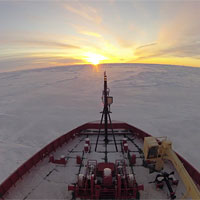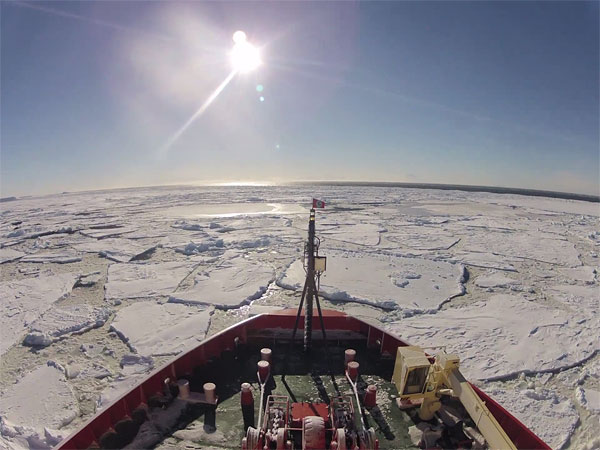Beautiful time-lapse video captures the surprising nuances of the Antarctic
posted Monday, May 13, 2013 at 4:30 PM EST

We're all familiar with time-lapse video, to the point that it's become something of a cliché. Readily-available dedicated cameras with time-lapse or interval modes and a panoply of smartphone time-lapse apps have made the effect one with which we can easily experiment. A new 2K, time-lapse video shot in the Ross Sea by marine scientist Cassandra Brooks stands out from the crowd, though.
A lot of videos seem to use time-lapse almost for its own sake; the effect takes center stage, and dominates. In Brooks' video, time-lapse is used more simply as a storytelling tool, serving to compress weeks into minutes, and to inject a sense of life and motion.
The subject matter itself is also not one that would seem immediately conducive to time-lapse. There are no cities at work and play here, no fast-paced construction or demolition, no tides ebbing and flowing, nor even particularly bold colors for much of the time. Instead, there's slow-moving Antarctic ice -- mile upon mile of it, as far as the eye can see -- and yet, the camera captures a surprising degree of nuance.

Still from video shot by Cassandra Brooks on the TRACERS expedition.
There are, it seems, many different kinds of sea ice, each with their own character. Narrating the video, Brooks captures a sense of the wonder in this frigid environment, whose beauty seems still to enthrall her after countless weeks in its midst:
"The ice has surprised me with its dynamism, providing a different scene every day. Sometimes, every hour, changing moment to moment. There's ice that's streaked and shattered, like glass. Ice splitting along hidden seams. Grease ice, forming as a thin layer as the winds whip and scream. Ice forming like pancakes: first small, then growing in size, often glowing golden-green with algae. Then the pancakes freeze together, forming pack ice, which breaks into floes."
Perhaps we're just hooked on the unspoiled beauty of the hostile Antarctic environment, but we found Brooks' video absolutely captivating -- and there's a nice little surprise at the end, as well. For the greatest visual impact, be sure to watch the video in its original 2,048 x 1,536 pixel resolution.
You'll find lots more information about the expedition on Brooks' National Geographic-hosted blog, as well as on the official TRACERS project blog. If you're a fan of time-lapse video, you may also find some of our other recent time-lapse finds to be of interest:
-
Worth another look: beautiful video captures one year in 40 seconds
-
Photographer captures stunning nature time-lapse video using old, basic Nikon camera
Even more time-lapse videos can be found in our archives.
(via John Nack on Adobe)